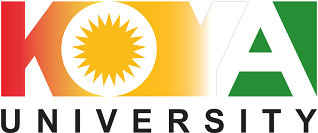A Critical Evaluation of Google Translation: The Case of English-Sorani Kurdish Translation
DOI:
https://doi.org/10.14500/kujhss.v5n1y2022.pp114-124الكلمات المفتاحية:
Google Translate، English-Kurdish translation، Sorani Kurdish، linguistic level، cultural levelالملخص
Google Translate is one of the most frequently and actively used machine translation services worldwide. Sorani Kurdish, otherwise known as Central Kurdish, was officially added to Google Translate in May 2022. At the onset of the launch of Sorani Kurdish translation services, it is crucial to evaluate the quality of the translation and pave way for improvements, if necessary. Taking into consideration both linguistic and cultural aspects, this paper aims to critically investigate the accuracy of English-Sorani Kurdish translations produced by Google Translate. For this purposes, the paper has adopted a textual analysis approach based on the notion of equivalence to critically analyze samples of translations generated by Google Translate. The results suggest that Google Translate is largely accurate at morphological and syntactic levels but improvements are needed to improve minor deficiencies detected in rendering ‘future perfect tense’, ‘third conditional sentences’ and passive tenses, especially in the case of ‘present progressive’ and ‘past progressive’ tenses. With regard to the semantic level, Google Translate has proved accurate in processing polysemous words, but it has assumed a total failure in translating idioms and proverbs. At the cultural level, in over third-fourths of instances Google Translate renders English cultural terms into Sorani Kurdish accurately, whereas in nearly one-fourth of instances it offers inappropriate translation. As far as English into Sorani Kurdish translation is concerned, Google Translate can be deemed effective as a supportive translation tool but it is far from being perfect, and continuous improvements will be needed to respond to the deficiencies unearthed in this study.
التنزيلات
المراجع
Bassnett, S. (2013). Translation Studies (4th ed.). London and New York: Routledge.
Cronin, M. (2013). Translation in the Digital Age. London and New York: Routledge.
Crystal, D. (2008). A Dictionary of Linguistics and Phonetics (6th ed.). Oxford: Blackwell.
Davies, E. E. (2003). ‘A Goblin or a Dirty Nose? The Treatment of Culture-Specific References in Translations of the Harry Potter Books’. The Translator, 9 (1), pp. 65-100. Retrieved from https://doi.org/10.1080/13556509.2003.10799146
Dickins, J. (2012). Procedures for Translating Culturally Specific Terms. In Littlejohn, A. and Roa Metha, S. (eds.) Language Studies: Stretching the Boundaries (pp. 43-60). Newcastle upon Tyne: Cambridge Scholars Publishing.
Fox, K. (2004). Watching the English: The Hidden Rules of English Behaviour. London: Hodder and Stoughton.
Franco Aixelá, J. (1996). Culture-Specific Items in Translation. In Álvarez, R. and Vidal, C. Á. (eds.) Translation, Power, Subversion (pp. 52-78). Clevedon: Multilingual Matters.
Hofstadter, D. (2018). ‘The Shallowness of Google Translate’. [Online]. [Accessed 24 June 2022]. Retrieved from https://www.theatlantic.com/technology/archive/2018/01/the-shallowness-of-google-translate/551570/
Ivir, V. (1987). Procedures and Strategies for the Translation of Culture. In Toury, G. (eds.) Translation Across Cultures (pp. 35-46). New Delhi: Bahri Publications.
Katan, D. (2009). Translation as Intercultural Communication. In Munday, J. (eds.) The Routledge Companion to Translation Studies (pp. 74-92). London and New York: Routledge.
Lucente, A. (2022). ‘Google Translate adds Sorani Kurdish’. [Online]. [Accessed 24 June 2022]. Available from: https://www.al-monitor.com/originals/2022/05/google-translate-adds-sorani-kurdish#:~:text =Why
Wang, M. (2016). Learning a Second Language. In Mayer, E. R., and Alexander, A. P. (eds.) Handbook of Research on Learning and Instruction (2nd ed) (pp. 128-144). New York: Routledge.
Newmark, P. (1988). A Textbook of Translation. Hemel Hempstead: Prentice Hall International.
Newmark, P. (2010). Translation and Culture. In Lewandowska-Tomaszczyk, B. and Thelen, M. (eds.) Meaning in Translation (pp. 171-181). Frankfurt am Main New York: Peter Lang.
Nida, E. (1964/2004). Principles of Correspondence. In Venuti, L. (eds.) The Translation Studies Reader. (2nd ed.) (pp. 126-140). London and New York: Routledge.
Nord, C. (2005). Text Analysis in Translation: Theory, Methodology and Didactic Application of a Model for Translation-Oriented Text Analysis. Amsterdam: Rodopi.
Qu, W. (2021). ‘Algorithm Design of Translation Accuracy Correction for English Translation Softwares’. Journal of Physics: Conference Series, 1852, pp. 1-6. Retrieved from https://doi:10.1088/1742-6596/1852/4/042087
Rahimi, A., Rasul, S. H., and Mohammed, A. A. (2022). ‘Students’ Perceptions of Translation: Art, Craft and/or Science?’. Journal of University of Human Development, 8(3), pp. 90-96. Retrieved from https://doi.org/10.21928/juhd.v8n3y2022.pp90-96
Rasul, S. H. (2015). Procedures and Strategies in English-Kurdish Translation of Written Media Discourse, unpublished PhD thesis offered to the University of Leeds.
Rasul, S. H. (2018). ‘Translation of Idioms across Languages’. Transletters. International Journal of Translation and Interpreting, 1, pp. 121–141. Retrieved from https://www.uco.es/ucopress/ojs/index.php/tl/article/view/11036
Rasul, S. H. (2019). Journalistic Translation: Procedures and Strategies in English-Kurdish Translation of Media Texts. Newcastle: Cambridge Scholars Publishing.
Thackston, W. M. (2006). Sorani Kurdish: A Reference Grammar with Selected Reading. [Online]. [Accessed 20 July 2022]. Retrieved from https://www.academia.edu/ 34440113/Sorani_Kurdish_A_Reference_Grammar_with_Selected_Readings_W_M_Thackston
Toury, G. (2012). Descriptive Translation Studies and Beyond (2nd ed.). Amsterdam and Philadelphia: John Benjamins.
Vinay, J.-P. Darbelnet, J. (1995). Comparative Stylistics of French and English: A Methodology for Translation. Amsterdam and Philadelphia: John Benjamins.
Yule, G. (2010). The Study of Language (4th ed.). Cambridge: Cambridge University Press.
التنزيلات
منشور
كيفية الاقتباس
إصدار
القسم
الرخصة
الحقوق الفكرية (c) 2022 Sabir H. Rasul

هذا العمل مرخص بموجب Creative Commons Attribution-NonCommercial-NoDerivatives 4.0 International License.








